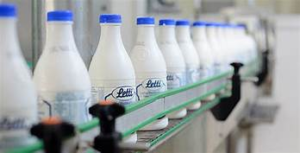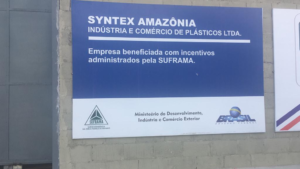With annual growth rates of around 7% in the world and somewhere between 8% and 10% in the Brazilian market, polypropylene stands out as one of the most successful resins in the plastic industry. Survey prepared by the Sectorial Commission for Thermoplastic Resins of the Brazilian Chemical Industry Association (Coplast / Abiquim), of the apparent Brazilian consumption in the first quarter of the year, measured a volume of 314 thousand tons of resin, up 8% over the same period in 2007 In the evolution from January to April, preliminary data record a total consumption of 404 thousand tons.
Not for nothing, the two local manufacturers flaunt investments in expansion. Leader, Braskem inaugurated in April a unit of 350 thousand tons / year in Paulínia-SP. The project absorbed resources in the order of R $ 700 million and increased the company’s production capacity, from PP alone, to 1.2 million tons / year.
Its competitor, Nova Petroquímica (Suzano’s provisional name after its incorporation into Petrobras) disbursed US $ 80 million in an expansion program that included a recent increase of 100 thousand tons per year in its Duque de Caxias-RJ unit and will revert, even in this year, in the expansion of the Mauá-SP plant, from 360 thousand to 450 thousand tons / year. Until then, the company’s three facilities (another 125,000 t / y in Camaçari-BA) will be able to process a total of 875,000 t / y of PP.
In addition to expanding the product offer, the investments reverted to changes in the polymerization process with the use of state-of-the-art catalysts at the Duque de Caxias unit. With the modernization, Nova Petroquímica gains greater flexibility in the development of grades, restricted until then to the Mauá factory, and increases its product portfolio.
There are plenty of reasons to justify so many investments in the resin, which has one of the most advantageous cost / benefit ratios. Its main intrinsic characteristic, low density, translates into higher yield per purchased volume, synonymous with productivity for the transformer. It also incorporates one of the best balance of rigidity and impact properties. Formulated in compounds, polypropylene enables the aggregation of several types of fillers and additives and oozes particularities capable of displacing engineering plastics in high technical rigor applications, such as those required by the automobile industry, one of the main consumers of these recipes. It is still subject to molding in all transformation processes.
Behind such versatility, the industry moves frantically on two fronts. In the resin wing, the race aims to further improve the balance of its rigidity and impact properties, to increase fluidity (synonymous with faster cycles) and to achieve high transparency, brightness and barrier, requirements that are increasingly requested, in especially by the rigid and flexible packaging industries.
In the case of compounds, whose production supplies almost entirely the automotive sector, the goal is to achieve greater capacity to absorb impacts, allow designers to elaborate more complex designs, in addition to giving molded parts greater dimensional stability, better surface quality and facilitating the painting. Still embryonic in the country, nanotechnology signals the potential to sustain a large part of this evolution, both in resin and in compounds.
At a slow pace – The Brazilian transformer has had PP nanocomposites since the end of 2006, when Braskem and then Suzano Petroquímica announced the launches, almost simultaneously, with much pomp and circumstance.
Braskem’s PP nanocomposite (additive with clay nanoparticles) outperforms conventional resin in chemical, thermal and mechanical resistance, and in its gas barrier capacity, in addition to offering other advantages. For the transformer, this advance means the possibility of producing “smart” packaging, lighter products, bolder designs and parts with better properties.
Modern Plastic, Sinclair Fittipaldi, Marketing Manager, Polypropylene – Technological advances sustain high demand and drive expansions of resin and compound
Fittipaldi: PP growth in cars is significant
While selling products formulated with silver nanoparticles, with bactericidal and fungicidal actions, Nova Petroquímica is preparing the launch of two new nanostructured lines. In an advanced stage of development, they should reach the market in the next six months. One of them promises high mechanical and risk resistance, requirements highly demanded by the automotive industry; the other, flame-retardant properties. The one intended for automobiles should model structural and semi-structural parts, such as panels, consoles, interior doors, engine hood, intake ducts, among others, informs the marketing manager, Sinclair Fittipaldi.
The automobile market is one of the company’s main consumers. The manager estimates to supply around 55 thousand tons per year to this industry alone, a volume equivalent to between 8% and 10% of sales to the domestic market. “The sector’s growth is significant. Plastic makes up about 25% of the car and, in this composition, PP represents 58% ”, calculates Fittipaldi. Polypropylene is making great strides, in very close competition with engineering plastics.
The market demands converge on four points, according to the Nova Petroquímica manager’s assessment: competitive price and performance, these two variables in line; gain in competitiveness; and logistics, which, in the manager’s opinion, can constitute a competitive differential.
Inserted in the context of the eternal persecutions of polypropylene, the developments of Nova Petroquímica include random copolymers added with the latest generation of clarifying agents from the Milliken NX 8000 series, which result in products of the highest transparency (Luzz family); and polypropylenes with greater resistance to the barrier. The hyper clarifier ensures 50% greater transparency in relation to PP with the conventional agent, among other benefits (see PM 401, March 2008, p. 13). The improvement of the barrier is an achievement to be achieved through nanotechnology and continues in the development phase, with promises to reach the market within ten months, under the Diya brand.
Laboratory research also involves a larger project, driven by the “green” wave that spreads across the country. Nova Petroquímica plans to produce propylene derived from residual biodiesel glycerin. The process, developed in partnership with the Federal University of Rio de Janeiro, was patented with joint ownership.
The schedule provides for the completion of a pilot plant by the second half of 2009 and entry into commercial stage by 2014. The laboratory-scale unit is expected to absorb resources estimated at US $ 25 million. Commercial proportions should receive twice as many investments. “The idea is to produce 100 thousand tons / year of polypropylene with propylene obtained from a renewable source”, informs the technology manager, Pedro Boscolo. Initially, the novelty should cover 10% of the business.
Like the polyethylene manufactured with ethylene derived from the alcohol-chemical route, the polypropylene polymerized with propene from the biodiesel residual glycerin has the same molecular structure as the PP produced via the petrochemical route. The advantage is to have raw material taken from a renewable source.
Unique address – The two largest manufacturers of polypropylene compounds installed in the country, Basell and Borealis, both transnational groups, concentrate their business in the hands of the same market segment: the automotive. For the first, it represents 90% of the business and for the other, 80%. The difference, in the case of Borealis, goes to the white line and, in the case of Basell, electronics and other special applications.
Modern Plastic, Liane Lanzoni, director of marketing, sales and development at Borealis, Polypropylene – Technological advances sustain high demand and drive expansion of resin and compound
Liane: replacing materials is the biggest challenge
The sum of the installed capacity of the two, of 109 thousand tons per year, today supplies the needs of its main market, which consumes something around 100 thousand tons / year, according to estimates by one of its suppliers. Both, however, are touching on expansion projects that will breathe new life into the supply and expected growth in car production.
A partner of Nova Petroquímica, Basell launches in September a new line that will increase the capacity of the current 60 thousand t / year to 80 thousand t / year, all concentrated in Pindamonhangaba-SP, where the development center and laboratories also operate. The investment reaches US $ 8 million. “The Brazilian production of polypropylene compounds meets the current demand and even the growth projections for 2012, with a forecast of 5 million cars”, believes the business and development manager at Basell, Ricardo Souza.
Borealis purchases the resin from Braskem, which holds 20% of the first business in Brazil, and operates two lines that, taken together, reach the processing limit of 49 thousand tons per year. The installation of a third line, of R $ 18 million, scheduled to start in October, will increase the volume to 60 thousand tons / year. The company already has another expansion project of 10,000 t / year. The current capacity is distributed in Triunfo-RS (25 thousand t) and Itatiba-SP (24 thousand t).
The third line will be added to this last unit. It is an extension of the existing plant, expanded with a new extrusion line acquired from the German Werner & Pfleiderer. “It is a long-term investment and needs to be of the highest technology to meet market demands”, informs Liane Lanzoni, director of marketing, sales and development at Borealis.
Modern Plastic, Daniel Bahls, Borealis marketing manager, Polypropylene – Technological advances sustain high demand and drive expansion of resin and compound
Bahls: compost is developed to measure
And speaking of requirements, if the packaging industry persists due to its high transparency and, in the background, a barrier, that of automobiles has entered into an unbridled race to reduce the weight of vehicles, which implies lighter auto parts. In cars, it results in greater efficiency and less fuel consumption.
In addition to the relief in weight, the manufacturers of compounds have been deployed in the development of formulations to meet yet other impositions of their great customer: greater resistance to risk and ultraviolet rays, low brightness, less emission of volatiles, and even less odor and fogging effect. “There are several products to meet these properties, almost 100% made to measure. The assembler sends the specifications and we develop the compound according to those requirements. You cannot take advantage of the development of one automaker in another, as each has its own concept, even for the same group of properties ”, declares Borealis marketing manager, Daniel Bahls.
At Basell’s development center, the formulations aim at a balanced combination of rigidity and impact with a higher fluidity index, which allows the production of parts of more complex designs and with shorter injection cycles – synonymous with greater productivity. The parts become lighter and the designer gains greater flexibility in the design. “The stiffness / impact ratio seeks pieces with increasingly thinner thicknesses, and this is directly associated with greater fluidity, because if you don’t have fluidity, you can’t fill the mold”, explains Souza.
Not for nothing, the two local manufacturers flaunt investments in expansion. Leader, Braskem inaugurated in April a unit of 350 thousand tons / year in Paulínia-SP. The project absorbed resources in the order of R $ 700 million and increased the company’s production capacity, from PP alone, to 1.2 million tons / year.
Its competitor, Nova Petroquímica (Suzano’s provisional name after its incorporation into Petrobras) disbursed US $ 80 million in an expansion program that included a recent increase of 100 thousand tons per year in its Duque de Caxias-RJ unit and will revert, even in this year, in the expansion of the Mauá-SP plant, from 360 thousand to 450 thousand tons / year. Until then, the company’s three facilities (another 125,000 t / y in Camaçari-BA) will be able to process a total of 875,000 t / y of PP.
In addition to expanding the product offer, the investments reverted to changes in the polymerization process with the use of state-of-the-art catalysts at the Duque de Caxias unit. With the modernization, Nova Petroquímica gains greater flexibility in the development of grades, restricted until then to the Mauá factory, and increases its product portfolio.
There are plenty of reasons to justify so many investments in the resin, which has one of the most advantageous cost / benefit ratios. Its main intrinsic characteristic, low density, translates into higher yield per purchased volume, synonymous with productivity for the transformer. It also incorporates one of the best balance of rigidity and impact properties. Formulated in compounds, polypropylene enables the aggregation of several types of fillers and additives and oozes particularities capable of displacing engineering plastics in high technical rigor applications, such as those required by the automobile industry, one of the main consumers of these recipes. It is still subject to molding in all transformation processes.
Behind such versatility, the industry moves frantically on two fronts. In the resin wing, the race aims to further improve the balance of its rigidity and impact properties, to increase fluidity (synonymous with faster cycles) and to achieve high transparency, brightness and barrier, requirements that are increasingly requested, in especially by the rigid and flexible packaging industries.
In the case of compounds, whose production supplies almost entirely the automotive sector, the goal is to achieve greater capacity to absorb impacts, allow designers to elaborate more complex designs, in addition to giving molded parts greater dimensional stability, better surface quality and facilitating the painting. Still embryonic in the country, nanotechnology signals the potential to sustain a large part of this evolution, both in resin and in compounds.
At a slow pace – The Brazilian transformer has had PP nanocomposites since the end of 2006, when Braskem and then Suzano Petroquímica announced the launches, almost simultaneously, with much pomp and circumstance.
Braskem’s PP nanocomposite (additive with clay nanoparticles) outperforms conventional resin in chemical, thermal and mechanical resistance, and in its gas barrier capacity, in addition to offering other advantages. For the transformer, this advance means the possibility of producing “smart” packaging, lighter products, bolder designs and parts with better properties.
Modern Plastic, Sinclair Fittipaldi, Marketing Manager, Polypropylene – Technological advances sustain high demand and drive expansions of resin and compound
Fittipaldi: PP growth in cars is significant
While selling products formulated with silver nanoparticles, with bactericidal and fungicidal actions, Nova Petroquímica is preparing the launch of two new nanostructured lines. In an advanced stage of development, they should reach the market in the next six months. One of them promises high mechanical and risk resistance, requirements highly demanded by the automotive industry; the other, flame-retardant properties. The one intended for automobiles should model structural and semi-structural parts, such as panels, consoles, interior doors, engine hood, intake ducts, among others, informs the marketing manager, Sinclair Fittipaldi.
The automobile market is one of the company’s main consumers. The manager estimates to supply around 55 thousand tons per year to this industry alone, a volume equivalent to between 8% and 10% of sales to the domestic market. “The sector’s growth is significant. Plastic makes up about 25% of the car and, in this composition, PP represents 58% ”, calculates Fittipaldi. Polypropylene is making great strides, in very close competition with engineering plastics.
The market demands converge on four points, according to the Nova Petroquímica manager’s assessment: competitive price and performance, these two variables in line; gain in competitiveness; and logistics, which, in the manager’s opinion, can constitute a competitive differential.
Inserted in the context of the eternal persecutions of polypropylene, the developments of Nova Petroquímica include random copolymers added with the latest generation of clarifying agents from the Milliken NX 8000 series, which result in products of the highest transparency (Luzz family); and polypropylenes with greater resistance to the barrier. The hyper clarifier ensures 50% greater transparency in relation to PP with the conventional agent, among other benefits (see PM 401, March 2008, p. 13). The improvement of the barrier is an achievement to be achieved through nanotechnology and continues in the development phase, with promises to reach the market within ten months, under the Diya brand.
Laboratory research also involves a larger project, driven by the “green” wave that spreads across the country. Nova Petroquímica plans to produce propylene derived from residual biodiesel glycerin. The process, developed in partnership with the Federal University of Rio de Janeiro, was patented with joint ownership.
The schedule provides for the completion of a pilot plant by the second half of 2009 and entry into commercial stage by 2014. The laboratory-scale unit is expected to absorb resources estimated at US $ 25 million. Commercial proportions should receive twice as many investments. “The idea is to produce 100 thousand tons / year of polypropylene with propylene obtained from a renewable source”, informs the technology manager, Pedro Boscolo. Initially, the novelty should cover 10% of the business.
Like the polyethylene manufactured with ethylene derived from the alcohol-chemical route, the polypropylene polymerized with propene from the biodiesel residual glycerin has the same molecular structure as the PP produced via the petrochemical route. The advantage is to have raw material taken from a renewable source.
Unique address – The two largest manufacturers of polypropylene compounds installed in the country, Basell and Borealis, both transnational groups, concentrate their business in the hands of the same market segment: the automotive. For the first, it represents 90% of the business and for the other, 80%. The difference, in the case of Borealis, goes to the white line and, in the case of Basell, electronics and other special applications.
Modern Plastic, Liane Lanzoni, director of marketing, sales and development at Borealis, Polypropylene – Technological advances sustain high demand and drive expansion of resin and compound
Liane: replacing materials is the biggest challenge
The sum of the installed capacity of the two, of 109 thousand tons per year, today supplies the needs of its main market, which consumes something around 100 thousand tons / year, according to estimates by one of its suppliers. Both, however, are touching on expansion projects that will breathe new life into the supply and expected growth in car production.
A partner of Nova Petroquímica, Basell launches in September a new line that will increase the capacity of the current 60 thousand t / year to 80 thousand t / year, all concentrated in Pindamonhangaba-SP, where the development center and laboratories also operate. The investment reaches US $ 8 million. “The Brazilian production of polypropylene compounds meets the current demand and even the growth projections for 2012, with a forecast of 5 million cars”, believes the business and development manager at Basell, Ricardo Souza.
Borealis purchases the resin from Braskem, which holds 20% of the first business in Brazil, and operates two lines that, taken together, reach the processing limit of 49 thousand tons per year. The installation of a third line, of R $ 18 million, scheduled to start in October, will increase the volume to 60 thousand tons / year. The company already has another expansion project of 10,000 t / year. The current capacity is distributed in Triunfo-RS (25 thousand t) and Itatiba-SP (24 thousand t).
The third line will be added to this last unit. It is an extension of the existing plant, expanded with a new extrusion line acquired from the German Werner & Pfleiderer. “It is a long-term investment and needs to be of the highest technology to meet market demands”, informs Liane Lanzoni, director of marketing, sales and development at Borealis.
Modern Plastic, Daniel Bahls, Borealis marketing manager, Polypropylene – Technological advances sustain high demand and drive expansion of resin and compound
Bahls: compost is developed to measure
And speaking of requirements, if the packaging industry persists due to its high transparency and, in the background, a barrier, that of automobiles has entered into an unbridled race to reduce the weight of vehicles, which implies lighter auto parts. In cars, it results in greater efficiency and less fuel consumption.
In addition to the relief in weight, the manufacturers of compounds have been deployed in the development of formulations to meet yet other impositions of their great customer: greater resistance to risk and ultraviolet rays, low brightness, less emission of volatiles, and even less odor and fogging effect. “There are several products to meet these properties, almost 100% made to measure. The assembler sends the specifications and we develop the compound according to those requirements. You cannot take advantage of the development of one automaker in another, as each has its own concept, even for the same group of properties ”, declares Borealis marketing manager, Daniel Bahls.
At Basell’s development center, the formulations aim at a balanced combination of rigidity and impact with a higher fluidity index, which allows the production of parts of more complex designs and with shorter injection cycles – synonymous with greater productivity. The parts become lighter and the designer gains greater flexibility in the design. “The stiffness / impact ratio seeks pieces with increasingly thinner thicknesses, and this is directly associated with greater fluidity, because if you don’t have fluidity, you can’t fill the mold”, explains Souza.





